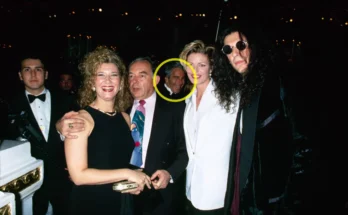It was a funeral two years in the making. The deceased had laid in a morgue in Greater Accra, Ghana, biding his time in icy torpor as plans were made for his final journey. There was financing to be sourced, a coffin to be built, a procession to be organized, rituals to follow, much of it shrouded in secrecy. Everything had to be perfect. After all, the man, Nii Agbetekor, had been the supreme traditional military leader of the town of Nungua.
An event of this scale had not been mounted for more than 20 years, according to Swiss academic Regula Tschumi, who was there to document it all. When the day arrived, in November 2024, not everything went to plan, she recalled. Nii Agbetekor’s lion-shaped coffin caught fire, burning most of its pink mane. A ribbon was found to cover the worst of the damage and the procession continued. Otherwise, the funeral went well. The five military chiefs of the Amanfa clan, all very much living, followed the deceased in elaborate seats known as palanquins — a turtle, a chili pepper, a rooster and a mudfish, and in a palm, the dead chief’s successor — while men in traditional uniform and other villagers thronged the streets.
Tschumi, an anthropologist, had heard of the event months in advance. What she didn’t know until she arrived was that her own research had helped plan the day. Not all rites are easily remembered, and the organizers had pored over a book she had written that covered the last time a supreme leader had passed. Using that information, and photos she had sourced, they were able to renew their traditions.

It’s not the first time Tschumi has found herself in this position. Her 20-plus years of documenting the unique funeral traditions of the Ga people of southeast Ghana has resulted in a PhD on the subject, multiple academic volumes, and now an eye-opening photography book, “Buried in Style: Artistic Coffins and Funerary Culture in Ghana.”
Tschumi’s book contains photographs from 2004 to 2024, taken mostly of the Ga people of Greater Accra, but also the Fante, Ewe and Asante peoples of the neighboring Central, Eastern and Volta Regions. She collates them into sections covering Christian and traditional funerals, the rise of coffin dancers in Ghana, the tradition of “laying out,” and an index of bespoke figurative coffins made by local artisans.

These coffins emerged in the mid-20th century, and were originally derived from the decorative traditional palanquins, said Tschumi.
In recent years they have captured the internet’s imagination thanks to their outlandish designs and literal intent. For example, a footballer who dreamed of moving to the United States was buried in football boot-shaped coffin, painted in the stars and stripes of the US flag, in 2022. Or a midwife buried inside a casket in the form of a laboring woman, in 2011. Or a traditional priest buried inside a giant blue teapot in 2009 — a reference to the one he would use in rituals.
Interestingly, it’s not the deceased but their family who decides on the design, Tschumi told CNN in a video call. “The family come to the (coffin maker)” she said. “Sometimes the artist has an idea, sometimes the family, sometimes they bring a photograph.”
Coffins typically take five to 10 days to create, and until recently carpenters worked entirely by hand, she explained. “They are not very expensive” by Western standards, Tschumi said. “That’s why (coffin makers) like to do business abroad,” she added; “to have a coffin bought by a museum (or) gallery is bigger business.”
Documenting the caskets is hard work. She’ll often have to stake out workshops for hours, as once coffins are finished, they’re quickly whisked away by relatives. That said, it’s nowhere near as hard as gaining access to some of the funerals.
“The Ga, they are not very open to foreigners,” said Tschumi, who has spent years earning the trust of village dignitaries, priests and persons of repute within the funeral trade.

There are good reasons for the Ga to be guarded. As the book notes, many traditional funeral practices were suppressed during the British colonial era, driving some already secretive rites further underground.
One was the practice of burying the dead under the floors of houses, Tschumi said, so that the spirit of the deceased could easily find its way back to the family home. When the colonial government forced the Ga to use cemeteries instead, it jeopardized this spiritual journey. However, the anthropologist has been told that the practice still continues in some areas.
Other elements of traditional funerals have also eluded her camera so far. “For chiefs and priests, we still don’t know where they are buried,” Tschumi said, explaining that chiefs are often buried at night away from prying eyes, with funerals conducted later, and performed with an empty coffin or palanquin.
But for the most part, the academic has achieved an incredible degree of access. A key figure in her story is Benjamin Aidoo, the originator of the now-famous “coffin dancers,” who has helped open doors for her since they first met in the early 2010s.



